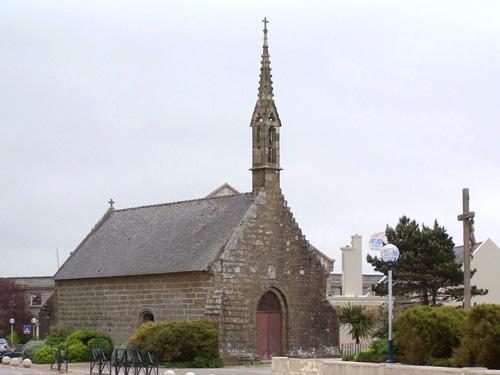Chapel of Notre-Dame de Bon-Secours
Dedicated to Notre Dame de Bon Secours, and established according to tradition on a former monastery, it was known as Notre-Dame de la Croix in 1540, and marked the boundary of the Pennaroff suburb. A small building paved with terracotta tiles, with a rectangular plan dating from the 15th and 16th centuries and restored in 1854, it preserves the remains of 15th century sculpture on the east gable. In the XVIIth century, it is called "Chapel of the Holy Cross" (as shown by a reliquary "of the True Cross", dating from the XIXth century); several bourgeois weddings are celebrated there, and it is used as a starting point for processions, in particular during the Pardon on the first Sunday of October. Its bell is used in foggy weather to guide ships through the entrance pass, of which the Roche du Cochon is not the most formidable danger.
About this building
The Chapel of the Cross, also called Chapel Notre-Dame de Bon-Secours, dates from the 15th century. The small bell tower of this rectangular building restored in the 19th century dates from 1854, the altar from 1835. There are several ancient statues of the Virgin Mother, Saint Anne, Saint Margaret, Saint Guénolé, as well as a painting representing the Blessed Virgin. The statue of Saint Guénolé in polychrome wood dates from the 16th century and was painted by Coroller.





